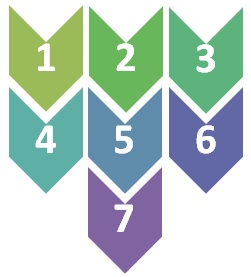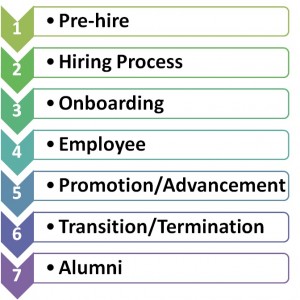 You may be familiar with my weekly employee engagement recap blog posts. In them, I curate the best articles I run across in a given week. I’ve found it interesting that most of these articles take a narrow approach to employee engagement. They focus on topics related to those employed by a company. I know. I hear you. You are saying, “Hello Greg, you have to work for a company to be called an employee and we are talking about EMPLOYEE engagement.” You’re right…and hear me out.
You may be familiar with my weekly employee engagement recap blog posts. In them, I curate the best articles I run across in a given week. I’ve found it interesting that most of these articles take a narrow approach to employee engagement. They focus on topics related to those employed by a company. I know. I hear you. You are saying, “Hello Greg, you have to work for a company to be called an employee and we are talking about EMPLOYEE engagement.” You’re right…and hear me out.
I propose there are actually seven phases of engagement and only four of them apply to actual employees. Each phase ties directly to the employee lifecycle and has the potential to impact the success of a company in terms of its ability to engage employees.
The 7 Phases of Engagement
While I’ll address each phase of engagement in greater detail in later posts, let me provide some context around what each of the phases entails.
In the Pre-hire Phase, there is an opportunity to engage future potential employees. Companies need to set the stage to encourage qualified candidates to want to work with them.
Once someone decides to pursue a position with a company, they move into the Hiring Process Phase. Since this will be the first direct contact between the potential employee and the company, impressions will make a big difference. The company must live up to or exceed its Pre-hire Phase reputation.
The next four phases (Onboarding, Engagement, Promotion/Advancement, and Transition/Termination) apply to actual employees.
The employee is now part of the company and is eager to make a difference. At this point, the employee is exposed to people outside of Human Resources and the hiring department. The Onboarding Phase will set the tone for the next three phases of the engagement process.
Once onboarded, the Engagement Phase begins. This is where most of the articles written on employee engagement tend to focus. This phase includes the bulk of the employee’s tenure with the company and will determine how quickly they arrive at the Transition/Termination Phase.
The Promotion/Advancement Phase is crucial as it begins a cycle. Being in a new role, the company will need to loop back to the Onboarding Phase and then move to a new Engaging Phase in order to continue to engage the employee from a company and new role standpoint.
The employee continues to loop through the Onboarding, Engaging, and Promotion/Advancement Phases until the Transition/Termination Phase. At this point, the employee decides to leave the company or the company decides to let the employee go. Either way, there is still an opportunity to engage the employee and move them to the final phase of engagement.
In the Alumni Phase, former employees are encouraged to maintain a positive relationship with the company for mutual gain. It is possible that an alum will desire to return to the company and begin the Hiring Process all over again.
Each of the 7 phases provides engagement opportunities that can help a company deepen its relationship with potential, new, current, and former employees. I hope you’ll come back next week when we’ll focus on the Pre-hire Phase.
What are your thoughts on the 7 Phases of Engagement? Are there phases you would add, combine, and or remove?
P.S. First time here? Welcome to the Agent In Engagement site. Thanks for taking the time to stop by! I hope you’ll explore the rest of the site. Let me know what employee engagement topics interest you.
If you enjoyed this article, you may also like…
- Just Say Hello!
- Naches and Employee Engagement
- Employees Are Might – Amazon meets Harry Potter
- Start with Why – Book Review
- To Most Employees, Managers Are The Company
- Step Away From Your Desk
- Are Managers Obsolete?
- Group 1: Employees Who Are Actively Disengaged
- Group 2: Employees Who Are Not Engaged
- Group 3: Employees Who Are Engaged
Let’s Get Engaged!
I’m Agent in Engagement Simpson…Gregory Simpson.
As an Agent in Engagement, my mission is to relieve the world of bad and ineffective managers. I help companies and their employees succeed by focusing on how frontline and middle managers engage, manage, and develop their direct reports.
After years in the field, where I was honored for my employee engagement achievements with Fortune 150 consulting clients, I’m looking forward to returning to headquarters where I’ll continue to pursue my directive to improve employee engagement.
I’m excited about this opportunity to connect with fellow “Agents.” Subscribe to the RSS Feed to receive the latest updates and/or register to comment on posts.
 Follow me @agtinengagement.
Follow me @agtinengagement.
Email me at g…@a…t.com.
Learn more about me at www.gregoryfsimpson.com.
